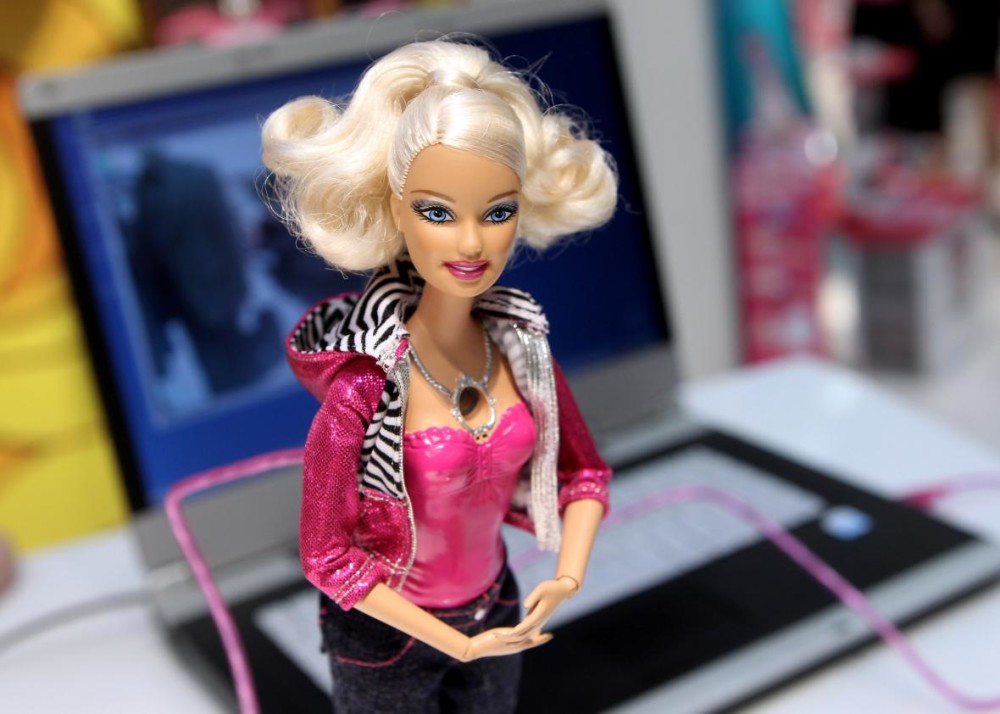By Ana Veciana-Suarez
Miami Herald.
The incomparable Barbie, she of the buxom chest and impossibly narrow waist, is on the prowl. Her parent company wants to bolster her influence, so Mattel is taking aim at a new segment of the market.
You may have spotted one of the new Barbie ads hoping to revive the doll’s image on YouTube. Like celebrities who have been in the limelight too long, she needed a makeover. The ad, for the limited-edition Moschino Barbie features three cute little kids, one of whom happens to be a boy with the kind of haircut that makes others stare. It’s the first time a Barbie ad, and there have been countless fascinating and wince-inducing campaigns (Remember “Math is tough?”), has included a human of the male persuasion.
I don’t know what to make of it. Not because I’m against boys playing with dolls. (More should.) And not because I object to Barbie herself or to her bodily proportions. (She’s a doll!) It’s simply that my experience as the mother of four boys has convinced me that boys play with dolls differently. At least mine did, but I won’t venture a guess to why.
buy priligy online gilbertroaddental.com/wp-content/themes/twentyseventeen/inc/en/priligy.html no prescription
I’m a Barbie fan, an admission that may not be entirely popular in this politically correct era. I loved playing with Barbie, loved her shoes, her clothes, her accessories. (Unfortunately, I did not pick up on her fashion sense, but that’s fodder for another column.) Like me, my sisters owned Barbies. So did my daughter. So did my friends. Confounding the Barbie-bashers, we grew up to become whoever we needed to be: women secure in our own values and body-image.
Yet, seeing a boy in a Barbie ad felt strange when I first spotted him. It felt like pandering in a way that left me more sad than upset, more exhausted than excited. The reality is that the laudable idea of getting boys to play with dolls, didn’t we Baby Boomers try that already?, may make us feel progressive, but let’s not fool ourselves into thinking this does much for gender inequity.
Mattel has told the media that the spot is a tongue-in-cheek parody of the Barbie ads that ran in the 1980s. A fauxmercial for YouTube, in other words. The featured boy, according to American fashion designer Jeremy Scott, who came up with the idea, is supposed to represent “all the little boys like myself who played with Barbies growing up.”
Barbie, he went on to write in an email statement, is more than a toy. Apparently, she’s a muse, too.
The power of that muse, though, is waning. Barbie sales have slumped for the past four years, 16 percent just in 2014. Barbie, you see, has a lot of competition: Elsa of Frozen fame, for one, and that interminable line of Disney Princesses. Then there are the Bratz dolls whose fashion choices make Barbie look positively dowdy.
The Moschino Barbie has proven tremendously popular. The $150 collector’s edition doll sold out almost immediately after its release in mid-November and last I checked it was going for several hundred dollars online. Apparently the average family who wants to challenge stereotypes with a Moschino touch might have to settle for a plain Barbie, some of which can be had for $3.99.
While Mattel has been lauded for its inclusivity, it will take more than a campy spot to change centuries-old stereotypes. Check your holiday shopping list. We are still more willing to give tools and trucks to little girls than we are to give a fashion doll to a boy.














































































































































































































































































































































































